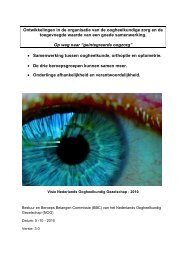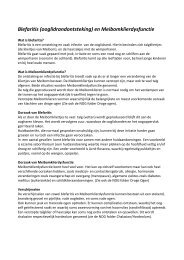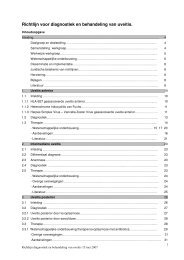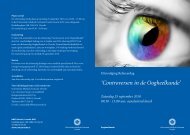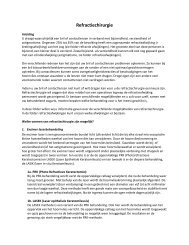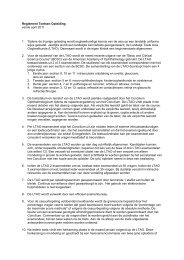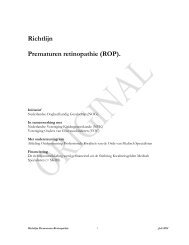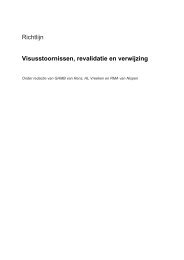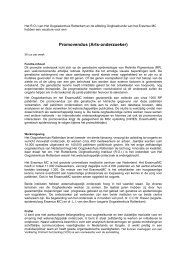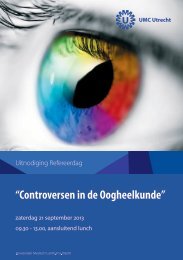terminology and guidelines for glaucoma ii - Kwaliteitskoepel
terminology and guidelines for glaucoma ii - Kwaliteitskoepel
terminology and guidelines for glaucoma ii - Kwaliteitskoepel
Create successful ePaper yourself
Turn your PDF publications into a flip-book with our unique Google optimized e-Paper software.
3.4 - COMPLIANCE IN GLAUCOMA<br />
Since <strong>glaucoma</strong> is a long-st<strong>and</strong>ing, progressive disease, which frequently requires topical medication <strong>and</strong> regular follow-up<br />
appointments, a patient’s continuous co-operation is essential <strong>for</strong> successful management.<br />
Compliance with <strong>glaucoma</strong> medications is considerably less than presumed by doctors <strong>and</strong> many patients fail to<br />
attend follow-up appointments 26-30 . Non-compliance is likely to have an important role in the progression to blindness<br />
from <strong>glaucoma</strong> 77 . Glaucoma patients are frequently old <strong>and</strong> may have diminished cognitive abilities, poor hearing<br />
<strong>and</strong> other ailments which, like arthritis, may reduce their ability to actually administer medication.<br />
Drug interactions <strong>and</strong> diminished drug tolerance must be taken into consideration. Consultation with other medical<br />
practitioners involved in the patient’s care may be necessary 23,75 .<br />
Compliance issues must be taken into account when the type of treatment is selected.<br />
Poor compliance is summarized as follows:<br />
1. Failure to instill eye drops (including ineffective technique of self-administration)<br />
2. Excessive use of eye drops (extra drops may cause systemic side effects)<br />
3. Self-administration of non-prescribed eye drops<br />
4. Improper timing of eye drops <strong>and</strong> eye drop administration <strong>for</strong> wrong reasons (a more frequent problem if nume<br />
rous drops are to be instilled <strong>and</strong> after changes in the patient’s topical medication regimen)<br />
How can compliance be improved<br />
1. Make the patient an active <strong>and</strong> in<strong>for</strong>med participant in his/her management. Glaucoma itself <strong>and</strong> the mechanism<br />
of the medication prescribed have to be explained. In addition, patients must be in<strong>for</strong>med about the symptoms of<br />
potential side effects. Written <strong>and</strong> audio-visual in<strong>for</strong>mation can be added to verbal education. If necessary, com<br />
munication with the patient’s family often helps to improve compliance.<br />
2. The number, concentration of drug <strong>and</strong> frequency should be kept to a minimum. Ocular irritation may be<br />
decreased by reducing the number of preserved eye drops 33-35 .<br />
3. Inconvenience caused by the medication has to be minimised, <strong>and</strong> the times of the eye drop instillation should be<br />
linked to l<strong>and</strong>marks of the patient’s daily routine.<br />
4. The patient should be taught how to instill eye drops correctly (correct technique of instillation, lid closure, punctal<br />
occlusion, use of instillation frames, time interval between administration of different drops etc). This knowledge<br />
is to be checked in practice. Ancillary medical staff can significantly help to accomplish this work.<br />
Ch. 3 - 27 EGS



